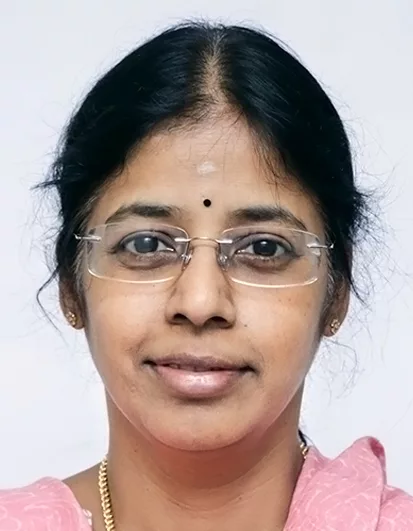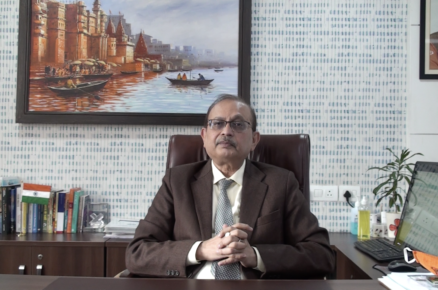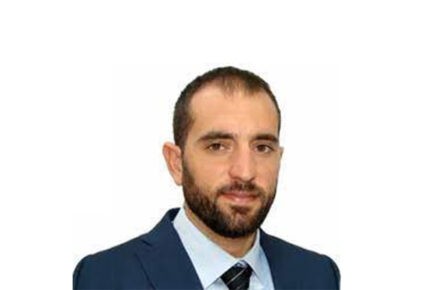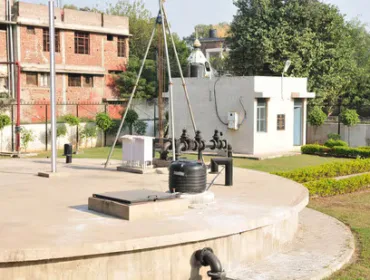A promising successor of AMRUT, it aims at rejuvenation of water bodies and reuse of treated water at the city level. In a conversation with Water Digest, Smt D Thara, IAS, Additional Secretary (A&CV), Ministry of Housing and Urban Affairs Government of India shared how AMRUT 2.0 places a strong emphasis on used water management.
Water Digest (WD): What are the broad schemes and policies that the Ministry of Housing and Urban Affairs has envisaged under AMRUT 2.0, aimed at ensuring equitable access to water and promoting sustainable water utilisation across diverse urban landscapes?
D Thara (DT): AMRUT 2.0, a paperless mission, launched under the visionary leadership of Hon’ble Prime Minister on October 1, 2021, embodies the ethos of ‘Transformation to Saturation.’ This ambitious initiative builds upon the momentum generated by its predecessor, AMRUT.
The core of AMRUT 2.0 is to make our cities ‘water secure.’ This entails providing quality water in adequate quantity through functional water tap connections to every household in around 4,902 towns and cities across the nation. To achieve the goal of making cities water secure, there is focus on the rejuvenation of water bodies and reuse of treated water at the city level. Moreover, it aspires to achieve universal coverage of sewerage and septage management services in 500 designated AMRUT cities.
To realise these far-reaching objectives, AMRUT 2.0 will facilitate the provision of 2.68 functional water tap connections and 2.64 crore sewer connections. Through substantial investment worth more than Rs 2 lakh crore in the urban water infrastructure, the mission aims to revolutionise the way cities manage their water resources.
One of the outstanding features of AMRUT 2.0 is its holistic approach to water management. It focusses not only on quantity and coverage but also on the quality of water supply. A pivotal strategy involves the implementation of City Aquifer Management Plans. These plans aim to tap into the hidden potential of urban aquifers, effectively turning cities into ‘sponge cities.’
Furthermore, AMRUT 2.0 places a strong emphasis on used water management. It recognises that appropriately treated used water can be a valuable resource to augment the availability of water for various purposes, including non-potable uses and groundwater recharge.
The mission promotes 24×7 water supply of ‘drink from tap’ quality in each ULB. These projects cover at least one ward or DMA with at least 2,000 households in the contiguous manner. Under the mission, Pey Jal Survekshan is being undertaken in 485 cities as a monitoring tool and mission accelerator.
The reform agenda of the mission also focusses on water security of ULBs. Overall, 8% of allocation is earmarked for reforms, which will be released to the States/UTs as reform incentives on achievement for certain performance focussed on water security, property tax reforms, NRW reduction etc. The mission promotes water sector technologies, indigenous equipment, and support startups through its technology sub-mission. In the inaugural start-up summit, 76 startups were selected, and MoUs were signed with 71 cities. These startups have been paired with 37 cities to scale up innovative solutions.
Mission AMRUT promotes innovations like ‘Bharat Tap,’ a water-efficient plumbing fixtures initiative led by manufacturers of sanitary wares and fittings in coordination with AMRUT 2.0. This effort promotes the use of low-flow sanitary ware and fittings to conserve water.
In essence, AMRUT 2.0’s vision extends far beyond mere infrastructure development. It seeks to transform India’s urban landscapes into resilient, water-secure environments by harnessing the power of sustainable practices, innovative technologies, and community engagement. This monumental endeavour represents a commitment to safeguarding our urban future while ensuring that every citizen has access to a fundamental resource that is essential for life and prosperity: clean and sustainable water.
WD: Please share the latest status of water-centric projects and schemes as part of Amrut 2.0 which are aimed at ascertaining that everyone has access to tap water and sewerage facilities.
DT: So far, MoHUA has approved State Water Action Plans (SWAPs) worth Rs 1.39 lakh crore (including O&M cost) comprising 3,126 water supply projects worth Rs 90,541 crore, 501 sewerage and septage management projects worth Rs 44,943 crore, 2,219 water body rejuvenation projects worth Rs 3,751 crore and 999 park projects worth Rs 452 crore. Through water supply projects, 1.57 crore new tap connections; 9,106 MLD water treatment capacity (to be added / augmented) are planned to be provided with 95,590 Km of water distribution network. In sewerage projects, 34 lakh new sewerage connections; 3,600 MLD sewage treatment capacity (to be added / augmented) are planned to be provided with around 25,000 Km of sewerage network.
WD: Amidst the framework of promoting the “circular economy of water” through development of City Water Balance Plan (CWBP), what strategies does AMRUT 2.0 propose to implement in the domain of water management, with an emphasis on reusing, recycling, and regenerating water resources in urban areas?
DT: AMRUT 2.0 envisages urban aquifer management, promotes recycle & reuse, rejuvenation of water bodies, and rainwater harvesting to augment freshwater resources. In a bid to become Aatma Nirbhar, cities target to create a ‘new tap of water’ by meeting 20% of state’s and 40% of industrial water demand through recycle of treated used water. The Aquifer Management Plan targets to be prepared, with focus on maintaining positive groundwater balance in urban aquifer systems. The recycle / reuse of used water is one of the focus areas under the mission. Through AMRUT projects, 1,437 MLD capacity has been developed for recycle/reuse and through AMRUT 2.0 approved projects, 1,616 MLD is planned to be recycled or reuse. Pey Jal Survekshan has been undertaken in AMRUT cities as a monitoring tool and mission accelerator.
WD: In the context of “capacity building and skill enhancement as part of urban reforms”, could you elucidate the training modules prepared under AMRUT 2.0 to empower urban water management professionals in adopting cutting-edge techniques and best practices?
DT: AMRUT 2.0. Mission guidelines outline that capacity building programs will be conducted for all stakeholders including elected representatives, urban administration functionaries, contractors’ staff, and citizens including women-self-help groups, with an aim towards enhancing knowledge base and improving job-related skills of targeted groups. Each group will be imparted relevant training. For instance, town planners will be trained in land monetisation, GIS-based master plans, formation of local area plans etc. whereas contractors will be trained for project and financial management, and citizens will be engaged in water quality testing through civil society organisations. Technical support will be extended to urban administrations to carry out implementation and monitoring along the various stages of the program. The capacity building component will be extended to contractors, managers, plumbers, plant operators, workmen, consultants, students, women, and citizens.
WD: Looking at the evolving landscape of urban water governance, what novel “norms and guidelines” has the Ministry of Housing and Urban Affairs introduced in AMRUT 2.0, to proactively address challenges such as climate change impacts and water quality?
DT: Under AMRUT 2.0, Pey Jal Survekshan is being carried out in AMRUT cities to ascertain the quality of water supplied and other parameters. The survekshan is in progress and results are awaited. The mission will also co-opt women and youth in water demand management, water quality testing, water infrastructure operations and for concurrent feedbacks about its progress.
WD: Considering the diverse demographic profiles of urban areas, what “inclusive measures” does AMRUT 2.0 employ to ensure equitable water access for marginalised communities, while concurrently promoting responsible water usage practices among the general populace?
DT: AMRUT 2.0 ensures equitable water access and responsible usage in diverse urban areas through:
- Prioritised Infrastructure: Focussing on development of water and sanitation services on priority services in areas with a significant concentration of marginalised communities to ensures these communities receive essential services on an urgent basis.
- Community Engagement: Actively involving local communities in project planning. Engaging women, youth, and Self-Help Groups for feedback and management.
- Affordability: Cities are being encouraged to adopt measures such as waiving or reducing connection costs for low-income groups/ low-cost access with fair telescopic tariff, and subsidies.
- Water Quality Assurance: Rigorous measures to protect vulnerable communities.
- Inclusive Sanitation: Promoting safe sanitation facilities for all.
WD: There is a lot of focus on creating sustainable and smart cities. Could you shed light on the interplay between AMRUT 2.0 initiatives and the United Nations’ Sustainable Development Goal 6 (SDG 6) that pertains to clean water & sanitation – ensuring the contribution of our nation towards achieving this global mandate?
DT: The mission envisages to achieve functional outcomes through providing universal piped water supply with household water tap connection with admissible elements of water supply projects including water source improvement and augmentation in the city, freshwater treatment, water distribution system in uncovered areas, sustainability of quality and quantity of water supply, smart solutions like SCADA, incentives linked to last mile connectivity to households. Sewerage and septage management sector include projects such as decentralised, networked underground sewerage systems, including augmentation of existing sewerage systems and sewage treatment plants;rehabilitation of old sewerage system and treatment plants; recycling of water for beneficial purposes and reuse of used water; faecal sludge management- cleaning, transportation and treatment in a cost- effective manner; mechanical and biological cleaning of sewers and septic tanks and recovery of operational cost in full. States and ULBs are encouraged to take up such projects.
WD: With the integration of smart technologies becoming increasingly pivotal in building urban water infrastructure, how does AMRUT 2.0 leverage cutting-edge data analytics and automates systems, fostering water-use efficiency and reducing wastage in urban landscapes?
DT: AMRUT 2.0 is a paperless mission with complete digital monitoring of projects progress and its funding. A collaborative AMRUT 2.0 technology platform has been created. Mission encourages to include smart elements like SCADA, water meters etc. in all water supply projects, reduction in Non- Revenue Water (NRW) through District Metered Areas (DMAs) and training to check leakages is another component for water-use efficiency and reducing wastage.
WD: Could you provide an in-depth analysis on the less publicised facets of AMRUT 2.0, specifically its reformative measures aimed at enhancing the ease of living for citizens; the Pey Jal Survekshan; and the Information, Education, and Communication (IEC) campaign designed to disseminate awareness among masses? Kindly share your opinion on the underlying significance of these focus areas and their anticipated impact points.
DT: As already mentioned, Pey Jal Survekshan is being carried out in AMRUT cities as a challenge process to assess the compliance of service level benchmarks with respect to quality, quantity, and coverage of water supply in the city. The survekshan is in progress and results are awaited. To ensure extensive outreach of the mission and its objectives; Information, Education and Communication (IEC) campaign will be undertaken, which shall target to build the capacities of local communities through information, education, and persuasion of people effecting Behavioral Change Communication (BCC). IEC will envisage to convert the campaign into a movement- Jan Aandolan by engaging ward committees, resident welfare associations, senior citizens, home makers, NGOs and civil society groups, students and youth, celebrities, brand ambassadors, and SHG groups.















